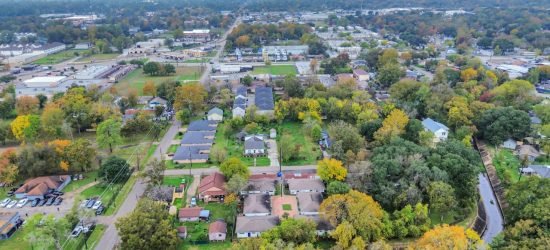Community engagement is the heartbeat of any thriving neighborhood, laying the foundation for a strong sense of belonging and shared responsibility. In this article, we will delve into effective community engagement strategies designed to foster connection, collaboration, and a vibrant living environment.
1. Regular Community Events
Initiating and orchestrating a consistent schedule of diverse community events serves as the bedrock for constructing a lively and tightly-knit neighborhood. These events, spanning from convivial social gatherings and idyllic picnics to cinematic movie nights and festive seasonal celebrations, offer invaluable occasions for residents to converge and establish profound connections. Prioritizing inclusivity entails meticulously curating events that cater to a spectrum of interests and age groups within the community, thereby nurturing a pervasive sense of unity among individuals hailing from various walks of life through effective community engagement strategies.

2. Community Clubs and Interest Groups
Actively fostering the establishment of community clubs and interest groups stands out as an influential strategy to fortify the social fabric. By uniting residents based on shared hobbies, sports, or activities, these groups evolve into vibrant centers for mutual interests and camaraderie. Bolstering these clubs with ample resources and dedicated meeting spaces not only stimulates residents to partake in consistent interactions but also cultivates a palpable sense of community spirit and collective enthusiasm, embodying effective community engagement strategies.
3. Communication Platforms
Establishing and maintaining an array of effective communication channels forms the sturdy backbone of robust community engagement. Implementing diverse mediums, such as a well-crafted community newsletter, timely email updates, or dynamic social media groups, becomes indispensable for keeping residents well-informed about imminent events, community developments, and vital announcements. The utilization of online platforms not only facilitates real-time information dissemination but also constructs a virtual community space, enabling residents to connect, share valuable insights, and sustain engagement even within the digital realm, showcasing effective community engagement strategies.

4. Resident Feedback Mechanisms
Cultivating a community that authentically aligns with the evolving needs of its residents necessitates the establishment of a transparent and continuous line of communication. Actively soliciting and encouraging regular feedback through thoughtfully designed surveys, strategically placed suggestion boxes, or engaging community meetings provides residents with dedicated avenues to articulate their concerns, express their preferences, and share innovative ideas.
The consequential step of not merely gathering but proactively incorporating this feedback into decision-making processes not only enhances the quality of community offerings but also profoundly underscores the residents’ sense of significance, ensuring they feel genuinely acknowledged and listened to through effective community engagement strategies.
5. Welcoming Committees
Instituting meticulously crafted welcoming committees emerges as a highly effective strategy to ensure that newly arrived residents experience a warm embrace from the community. Beyond the initial greetings, these committees play a pivotal role in furnishing essential information about available community resources, facilitating introductions to neighbors, and orchestrating orientation events tailored to the specific needs of newcomers.
By going the extra mile to aid new residents in seamlessly integrating into the community, these initiatives collectively contribute to the cultivation of a nurturing and inclusive atmosphere that resonates throughout the entire neighborhood, exemplifying effective community engagement strategies.
6. Collaborative Projects
Inspiring and nurturing resident collaboration on community projects serves as a catalyst for instilling a profound sense of shared responsibility and collective pride through effective community engagement strategies. Whether it involves organizing neighborhood clean-ups, cultivating community gardens, or contributing to the creation of inspiring art installations, these collaborative endeavors serve as transformative opportunities for residents to actively engage with one another in meaningful ways. Through their collective efforts, residents contribute not only to the aesthetic appeal but also to the overall well-being and cohesion of the community, forging lasting connections in the process.

7. Educational Workshops
Harnessing the power of knowledge-sharing emerges as a potent tool for fostering robust community engagement through effective community engagement strategies. Deliberately organizing and hosting workshops on a diverse range of topics, including but not limited to home maintenance, health and wellness, financial literacy, and educational opportunities, serves a dual purpose. It empowers residents with practical skills and information while simultaneously cultivating a culture of continuous learning and knowledge exchange within the community, thereby enriching the collective intellectual fabric.

8. Community Support Programs
The establishment of comprehensive community support programs, such as thoughtfully designed mentorship initiatives or robust buddy systems, functions as a cornerstone for fortifying the intricate fabric of the community through effective community engagement strategies. Beyond aiding new residents in navigating and acclimating to their surroundings, these programs create enduring channels for residents to support each other during various life transitions and challenging times. In doing so, they foster a resilient culture of mutual care and assistance that not only strengthens interpersonal bonds but also bolsters the overall sense of community solidarity.
9. Recognition and Appreciation
Cultivating a community imbued with positivity and appreciation necessitates the consistent acknowledgment and celebration of residents’ noteworthy achievements, significant milestones, and valuable contributions through effective community engagement strategies. The deliberate act of recognizing the positive impact that individuals make within the community not only serves as a testament to their efforts but also acts as a powerful catalyst for reinforcing a profound sense of belonging and motivation for continued active involvement.
10. Interactive Online Platforms
In the contemporary digital landscape, strategically fostering community engagement through dynamic online forums, meticulously curated community websites, or vibrant social media groups stands as an indispensable facet of community development through effective community engagement strategies. These virtual platforms create dedicated spaces wherein residents can seamlessly share their experiences, pose inquiries, and actively engage with one another. Leveraging technology to organize and facilitate virtual events, insightful webinars, or captivating live streams represents a strategic evolution, further interconnecting residents in the digital space and orchestrating a harmonious fusion of offline and online community building.

11. Partnerships with Local Businesses
Forging symbiotic collaborations with local businesses to extend exclusive discounts or promotions to residents manifests as a powerful means of establishing a tangible sense of community support and interconnectedness through effective community engagement strategies. These strategic partnerships not only confer tangible benefits to residents but also play a pivotal role in contributing to the vibrancy of the local economy, thereby reinforcing the reciprocal relationship between the community and its neighboring businesses.
12. Open Community Meetings
Conducting regular, transparent open community meetings emerges as a democratic and inclusive mechanism for actively involving residents in the communal decision-making process through effective community engagement strategies. These structured gatherings not only provide a dedicated platform for residents to vocalize their opinions and share innovative ideas but also actively engage in substantive discussions concerning various community matters. In doing so, they contribute to the establishment of a transparent, participatory, and inclusive community governance structure.
13. Green Spaces and Common Areas
Strategically designing communal spaces, verdant parks, and inviting recreational areas serves as an indispensable strategy for fostering serendipitous interactions and catalyzing the organic development of community bonds through effective community engagement strategies. These meticulously planned green spaces not only function as aesthetically pleasing gathering points but also offer residents opportune moments for recreation, relaxation, and spontaneous community building, contributing to the overall well-being and cohesion of the community.

Implementing effective community engagement strategies is a transformative journey that strengthens the bonds within a neighborhood, turning it into a place residents are proud to call home. By incorporating these strategies, communities can create an environment where residents feel connected, engaged, and motivated to contribute to the collective well-being.











